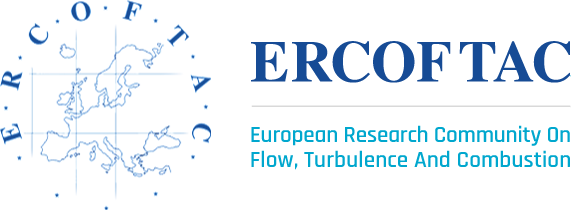Cavitation Instabilities and Rotordynamic Effects in Turbopumps and Hydroturbines
International Centre of Mechanical Sciences
July 7, 2014 — July 11, 2014
Luca d'Agostino (Università di Pisa, Pisa, Italy)
Maria Vittoria Salvetti (Università di Pisa, Pisa, Italy)
http://www.cism.it/courses/C1408/
The attainment of higher power densities in modern hydraulic turbomachinery is invariably obtained by running the impeller at the maximum allowable speed and lower shaft torque. Therefore, operation under cavitating conditions with lighter – but also more flexible – shafts is often tolerated especially in space propulsion applications, exposing the machine to the onset of dangerous self-sustained, cavitation-induced fluid dynamic and rotordynamic instabilities. Since these phenomena actually represent the major source life and reliability degradation of the machine, fundamental information on their nature and behavior is of crucial importance for the effective design of today’s high-performance hydraulic turbomachinery. However, the extreme complexity and imperfect understanding of the phenomena involved pose formidable obstacles to the modeling, prediction and control of cavitation-induced instabilities. For this reason, nowadays theoretical analyses and simulations alone are still of limited value for the solution of specific technical problems and progress in this field must rely on the support of dedicated experimentation.
The objective of the course consists in providing the participants with a detailed approach to the physics, fluid dynamics, modeling, experimentation and numerical simulation of cavitation phenomena, with special emphasis on cavitation-induced instabilities and their implications on the design and operation of high performance turbopumps and hydraulic turbines. To this purpose the first part of the lectures will cover the fundamentals (nucleation, dynamics, thermodynamic effects, erosion) and forms of cavitation (attached cavitation, cloud cavitation, supercavitation, vortex cavitation) relevant to hydraulic turbomachinery, discuss the physical mechanisms and occurrence of cavitation erosion phenomena, illustrate modern experimental techniques for the characterization, visualization and analysis of cavitating flows, and introduce the main aspects of the hydrodynamic design and performance of axial inducers, centrifugal turbopumps and hydo-turbines. The second part of the lectures will focus on the theoretical modeling, experimental analysis, and practical control of cavitation-induced fluid-dynamic and rotordynamic instabilities of hydraulic turbomachinery, with special emphasis on cavitating turbopumps (cavitation surge, rotating cavitation, higher order cavitation surge, rotordynamic whirl forces). Finally, the third part of the course will illustrate the alternative approaches for the simulation of cavitating flows, with emphasis on both modeling and numerical aspects. Examples of applications to the simulation of unsteady cavitation in internal flows through hydraulic machinery will be illustrated in detail.
The lecturers will use the background information to introduce the major topics currently open for cavitation research and stimulate the active participation of the audience by presenting and discussing original findings and results in their areas of expertise. The course is addressed to doctoral/postdoctoral students, researchers, scientists, scholars and professionals from universities, research institutions and industries active in aerospace, mechanical, hydraulic, naval and chemical engineering, applied mechanics, applied mathematics, industrial chemistry and applied physics, who are interested in perfecting their knowledge and understanding of cavitating flow phenomena and research in wide range of engineering applications.
The aim of the Workshop session is to provide an overview of state of the art models and numerical methods for the simulation of cavitating flows with a more fundamental and broader perspective than the SPECIFIC application to turbopumps and hydroturbines.
